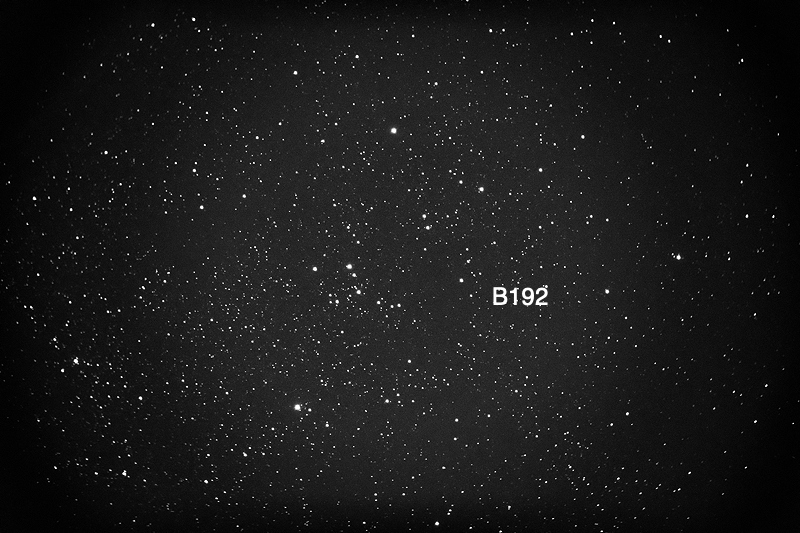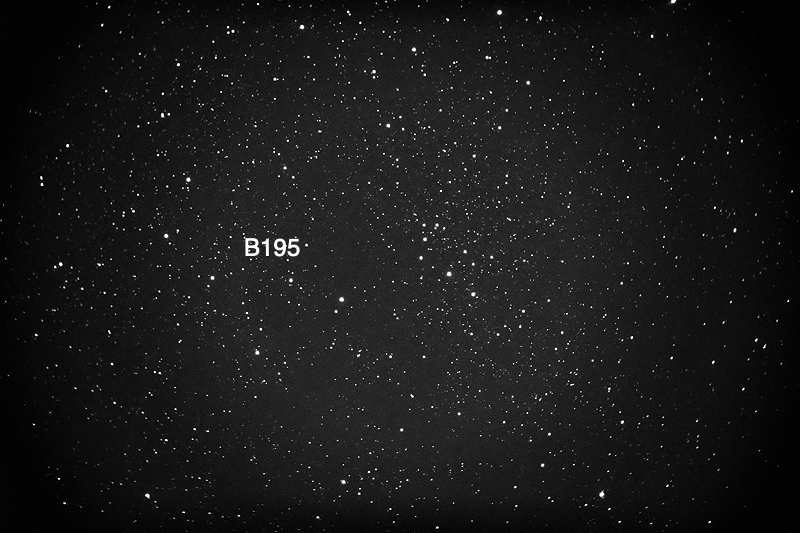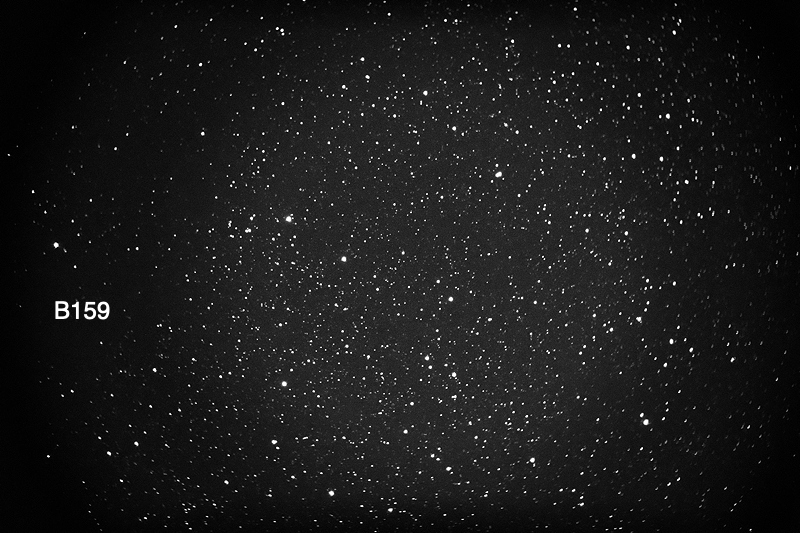ISS pass, Barnard Objects
Posted: 4 December 2024
During my last several Barnard Objects Project (dark nebulae) imaging sessions I had noticed that Right Ascension (RA) pointing accuracy had been decreasing as I moved northward in Declination in the list of Barnard Objects. This resulted in these faints objects being near or beyond the edge of the camera field-of-view. The reason for the error is the different Epochs used by the AutoStar and the object coordinates in the list. Previously when GOTOing the northern Barnard Objects I had been slewing in RA about 35 arcmin westward than the listed coordinates. After comparing my recent images to the reference images on the Grasslands Observatory Barnard Objects website I estimated that I would need to slew further westward by subtracting an additional 15 arcmin from the object Right Ascension. However, as I learned on my previous session, that turned out to be grossly overestimated. I re-investigated my previous images and guesstimated that only a 3 arcmin western adjustment was more correct. I tested that adjustment on this session.
|
Open: Tuesday, 3 December 2024, 1805 MST Temperature: 72°F |
Session: 2043 Conditions: Mostly clear |
Equipment:
12" f/8 LX600 w/StarLock
2" 24mm UWA eyepiece
Focal reducer
Camera:
iPhone 15 Pro Max
D850 DSLR
I first set up the iPhone 15 Pro Max on a camera tripod to photograph a good pass of the International Space Station (ISS). I mounted the iPhone on the tripod using the Levenhuk adapter.
I took this iPhone image of Venus (top) and the crescent Moon with Earthshine using the Camera app (Night Mode, 5 seconds, 2X lens).

1821 MST: I began this 2 minute iPhone image of the ISS pass (vertical) and several airplanes using NightCap Camera (ISS mode, 1X lens).

I then prepared the D850 DSLR for Barnard Objects (dark nebulae) imaging to test my guesstimate of a 3' Right Ascension adjustment.
1830 MST: LX600 ON, StarLock OFF, High Precision ON.
Viewed Venus, then Saturn, 102X.
Mounted the D850 DSLR at prime focus + focal reducer, focused on the star Deneb, SYNCed the AutoStar on Deneb, and locked the telescope primary mirror. I then waited for the Moon to get lower in the sky.
While waiting, I saw what appeared to be a pass of several SpaceX Starlink satellites. I managed to get this handheld iPhone photo (Night Mode, 10 seconds, 1X lens) of two of the satellites passing near the Milky Way.

I then slewed to the first Barnard Object and began imaging tests. By comparing the images of this first object to the reference image, I determined that the 3' RA adjustment was not quite enough. After several test images I decided that subtracting 5' from the object RA would work best, although as seen in these images, it still wasn't perfect.
1857 MST: StarLock ON.
Took these StarLock autoguided Barnard Object images, prime focus + focal reducer, 30 seconds, ISO 6400.











I had tried to image B199, but pointing was off. Will image it (I hope) on the next session.
2019 MST: StarLock OFF, High Precision OFF.
Viewed Jupiter and its four Galilean Moons, 102X.
2028 MST: LX600 OFF.
2036 MST: Took a Sky Quality reading.
|
Close: Tuesday, 3 December 2024, 2039 MST Temperature: 56°F |
Session Length: 2h 34m Conditions: Mostly clear, SQM 20.93 |
Comments are welcome using Email. Please read the Email Etiquette guidance.
Cassiopeia Observatory Home Page
Copyright ©2024 Michael L. Weasner / mweasner@mac.com.
URL = http://www.weasner.com/co/Reports/2024/12/04/index.html
